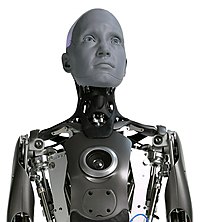
Photo from wikipedia
When in a digital control strategy there are samples lost due to limitations, different multirate (MR) control options can be used for solving the problem: Dual-rate inferential control (IC) and… Click to show full abstract
When in a digital control strategy there are samples lost due to limitations, different multirate (MR) control options can be used for solving the problem: Dual-rate inferential control (IC) and model-based dual-rate control (MBDR). The objective of this contribution is to analyze, compare, and to assess their behavior under different perspectives. Is a dual-rate inferential control better than a model-based dual-rate control? Both options lead to a periodically time-varying discrete-time system and for this reason a lifted modeling is considered. An efficient algorithm is used for computing a MR system's frequency response for these control structures. The robust performance and disturbance effects are studied in detail under sample losses and process uncertainty, and some considerations are reported. A new QFT (quantitative feedback theory) procedure for dual-rate systems analysis is also described. Analysis and simulation examples and experimental results for UGV path tracking are introduced in this work, revealing that MBDR outperforms IC when the model contains important uncertainties.
Journal Title: ISA transactions
Year Published: 2020
Link to full text (if available)
Share on Social Media: Sign Up to like & get
recommendations!